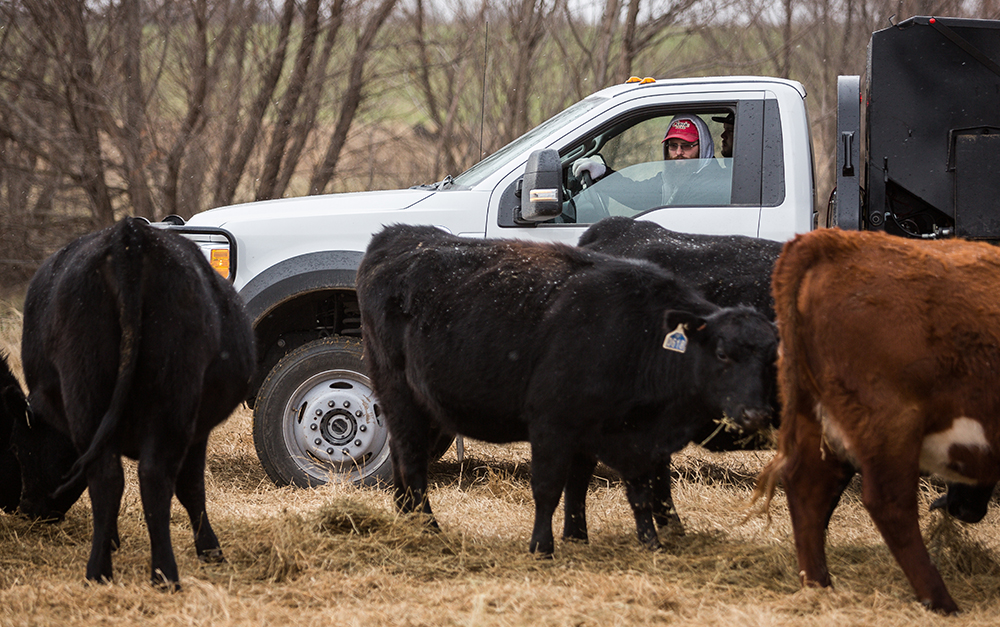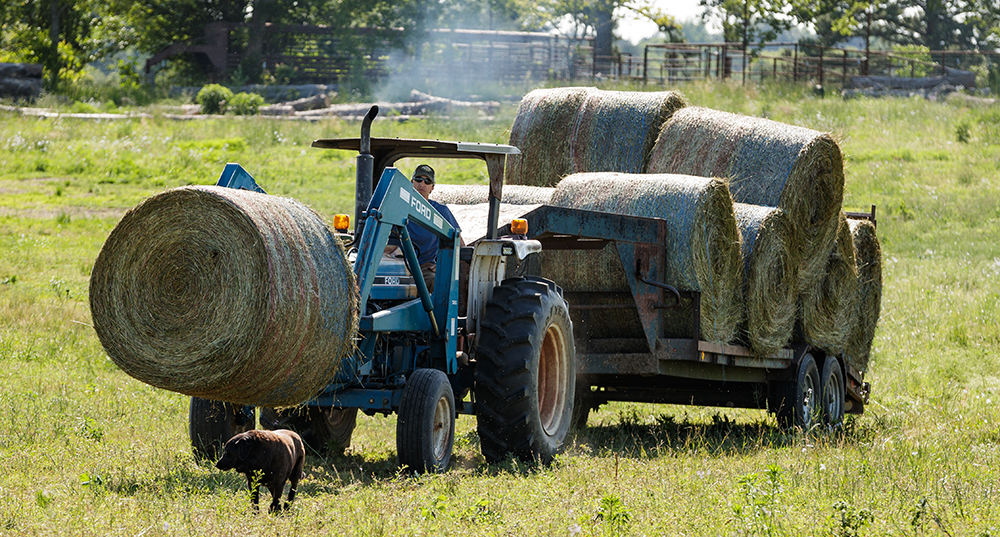Look for areas that are bare or underproducing. Then choose those spots for hay feeding to add nutrients to the soil.
In a regenerative mindset, oftentimes we think that one goal is to manage grazing in order to not use hay at all. Yet, just like any other tool that we have in our toolbox, hay feeding can be a useful strategy, especially if you’re trying to rebuild soil health in areas that are extremely deficient.
There are several reasons to bale graze while keeping a focus on soil health. Typically, where we’ve seen it work well is when, even though we probably would prefer to feed as little hay as possible, we use our grazing plan to pre-identify locations where bale grazing can do the most good for our soil health and forage production. Then, if and when inclement weather or other factors call for hay feeding, we know our spots in advance and can even pre-place the bales and fence them off until needed.

CHOOSING SITES FOR BALE GRAZING / HAY FEEDING
What we’re typically looking for is a site that is low in nutrients and could use the organic matter and nutrients that would be deposited right there where the hay would be fed. Where you get your biggest bang for your buck is on sites that should be productive, but for whatever reason, they’ve been neglected or they are just so far depleted of nutrients that there’s not much production.
Another type of area to target, especially if you ranch where you could have wet conditions during the wintertime, would be a well-drained location, perhaps a sandy or rockier soil that would hold up better under those type of conditions. They may not be overly productive, but they tend to have more bare ground, and you know that they will hold the cattle up and let you get in and out of the area during wet spells. It works out nicely to build those areas up while you’re feeding your cattle.
If it’s a really dry year, we can use bale grazing to encourage animals to get out and utilize parts of pastures that normally would escape grazing, perhaps farther away from water, where the cattle don’t want to roam quite so far out during the growing season.
One more place to plan bale grazing is a location where you want to be able to keep a closer eye on bred heifers or growing animals that need higher nutrition and a little extra attention during inclement weather or less-than-optimal grazing conditions.

PLANNING AND PLACING HAY IN ADVANCE
If you know that you’re going to be feeding hay based on your growing season, or you want to build up an area, or just because you know inclement weather’s going to get to you at some point, plan ahead and even place hay ahead of the winter feeding season. This is called “in-place” hay feeding. Don’t wait until the last minute to do it.
Once you’ve decided where you need and want to place hay, and you’ve either baled it at the optimal time during the growing season or acquired it, go ahead and set your feeding area up. Just know that you’re going to avoid using that area until the winter feeding season.
We oftentimes go ahead and space large round bales “in place,” typically 30 to 40 feet apart in a checkerboard manner on the target area, and then use temporary electric fences to allocate whatever hay that we want to utilize for a day or two of bale grazing at a time, when the time comes.














